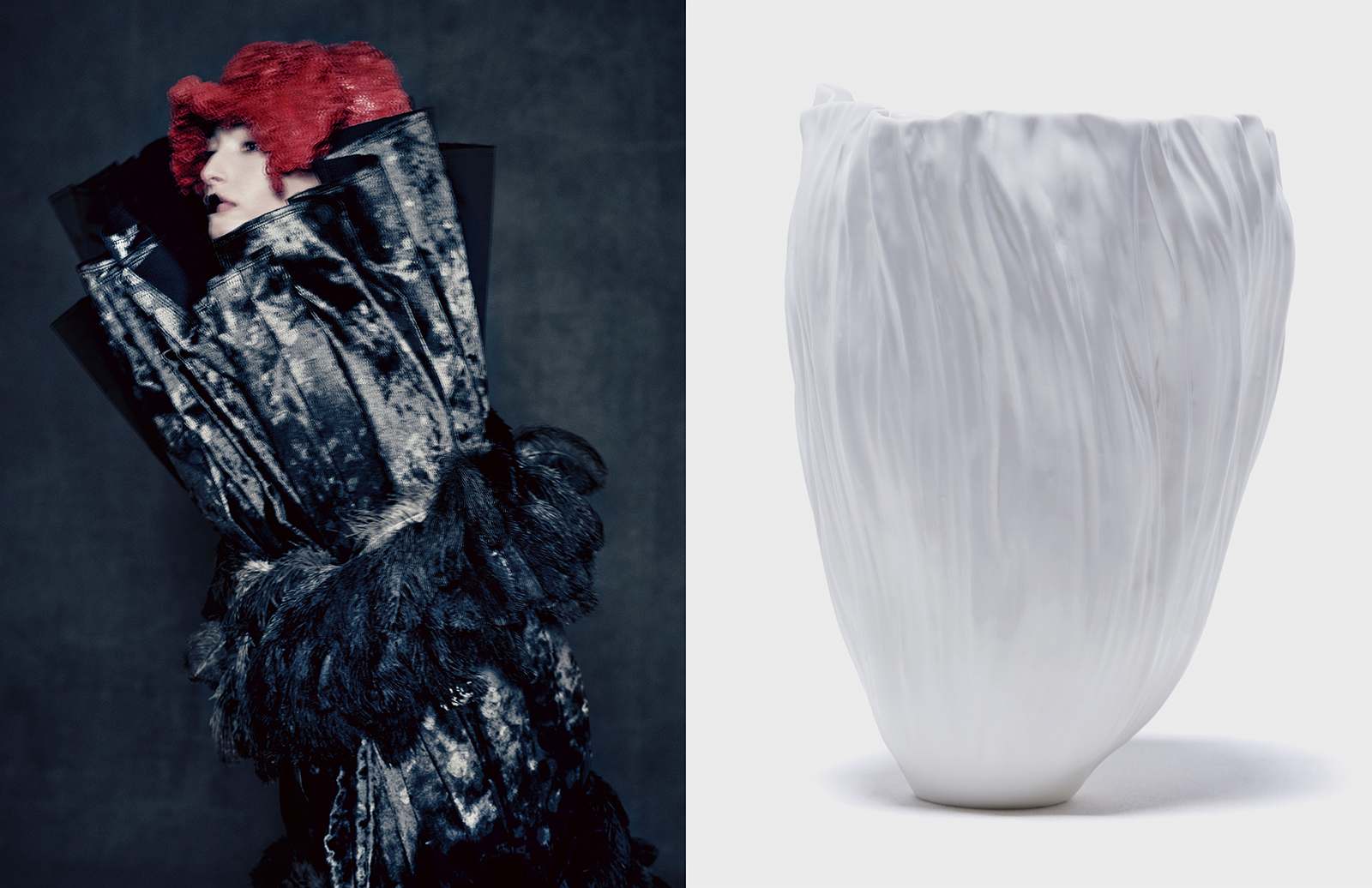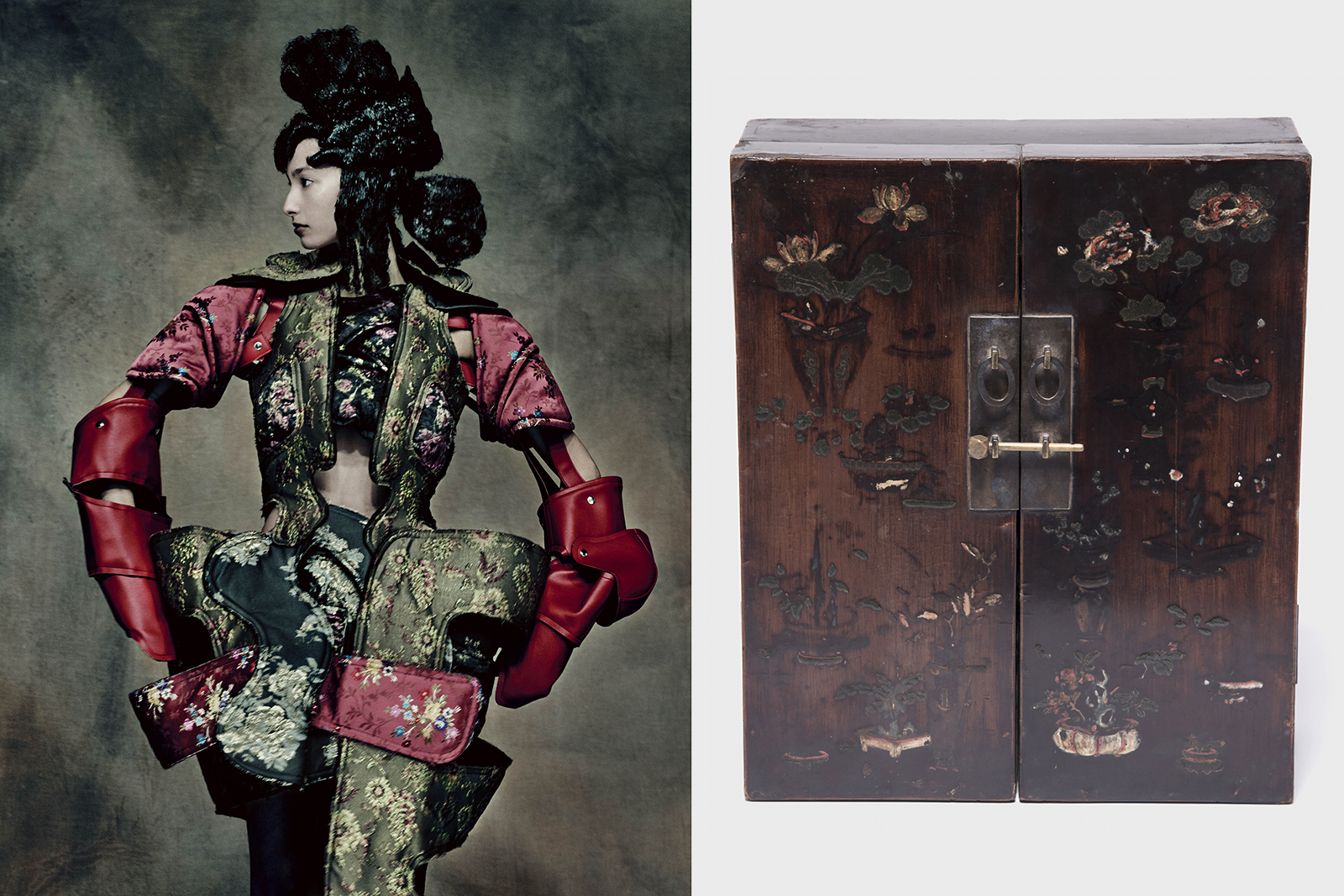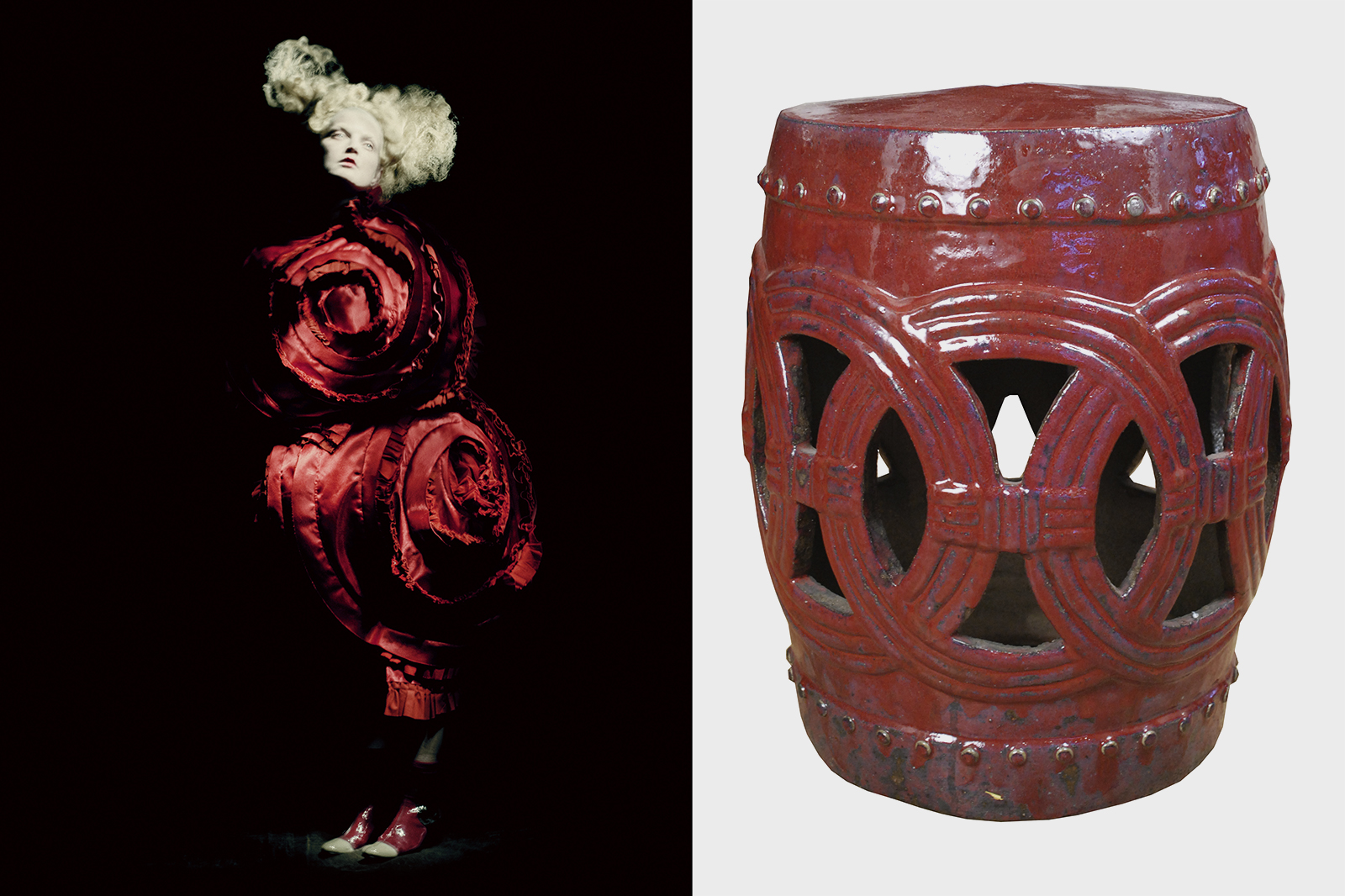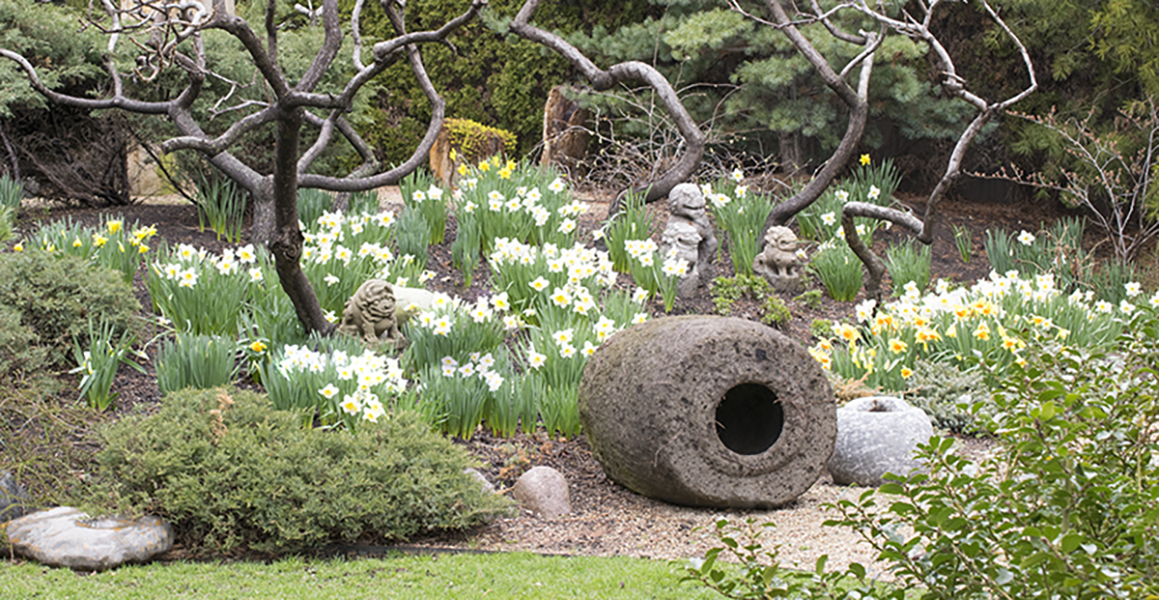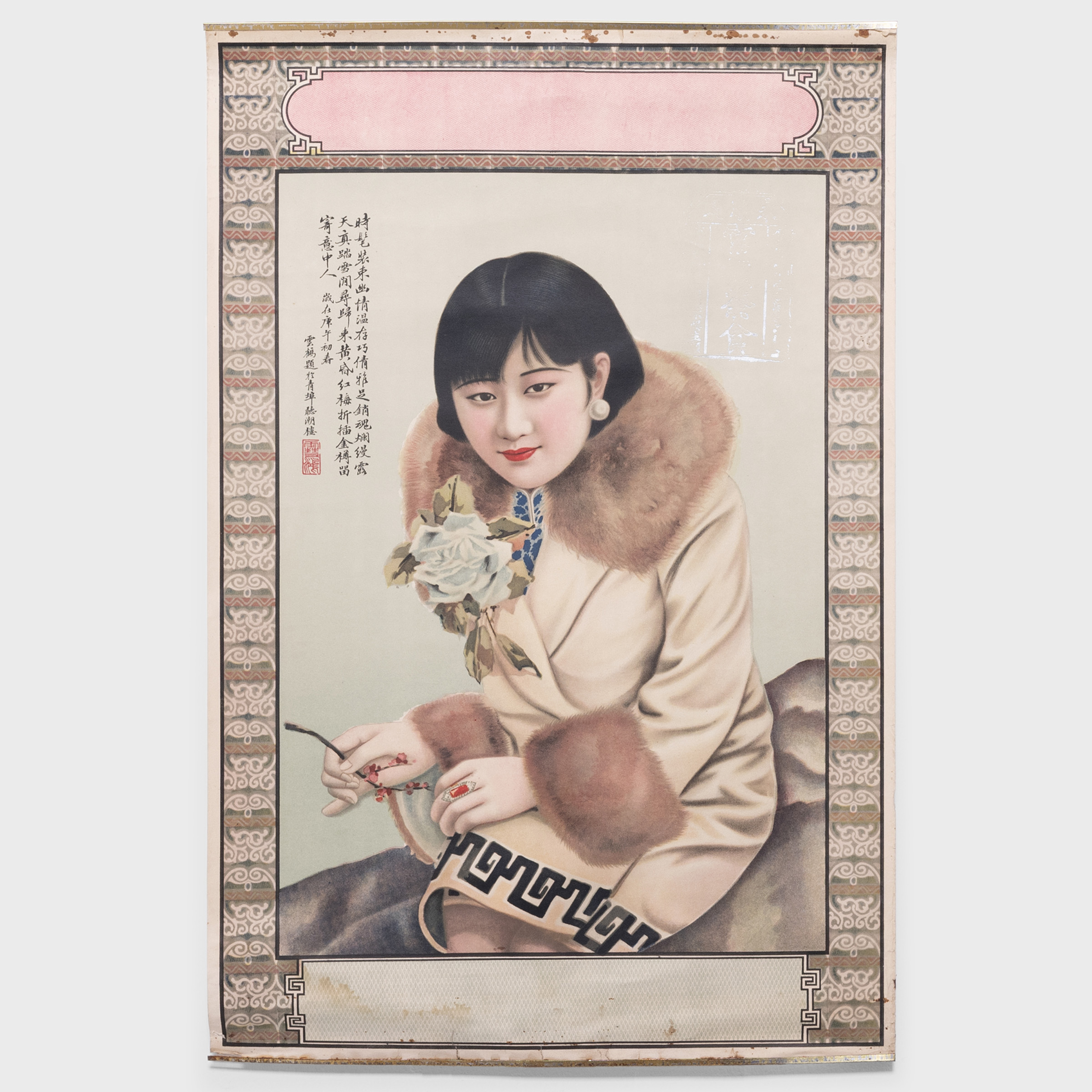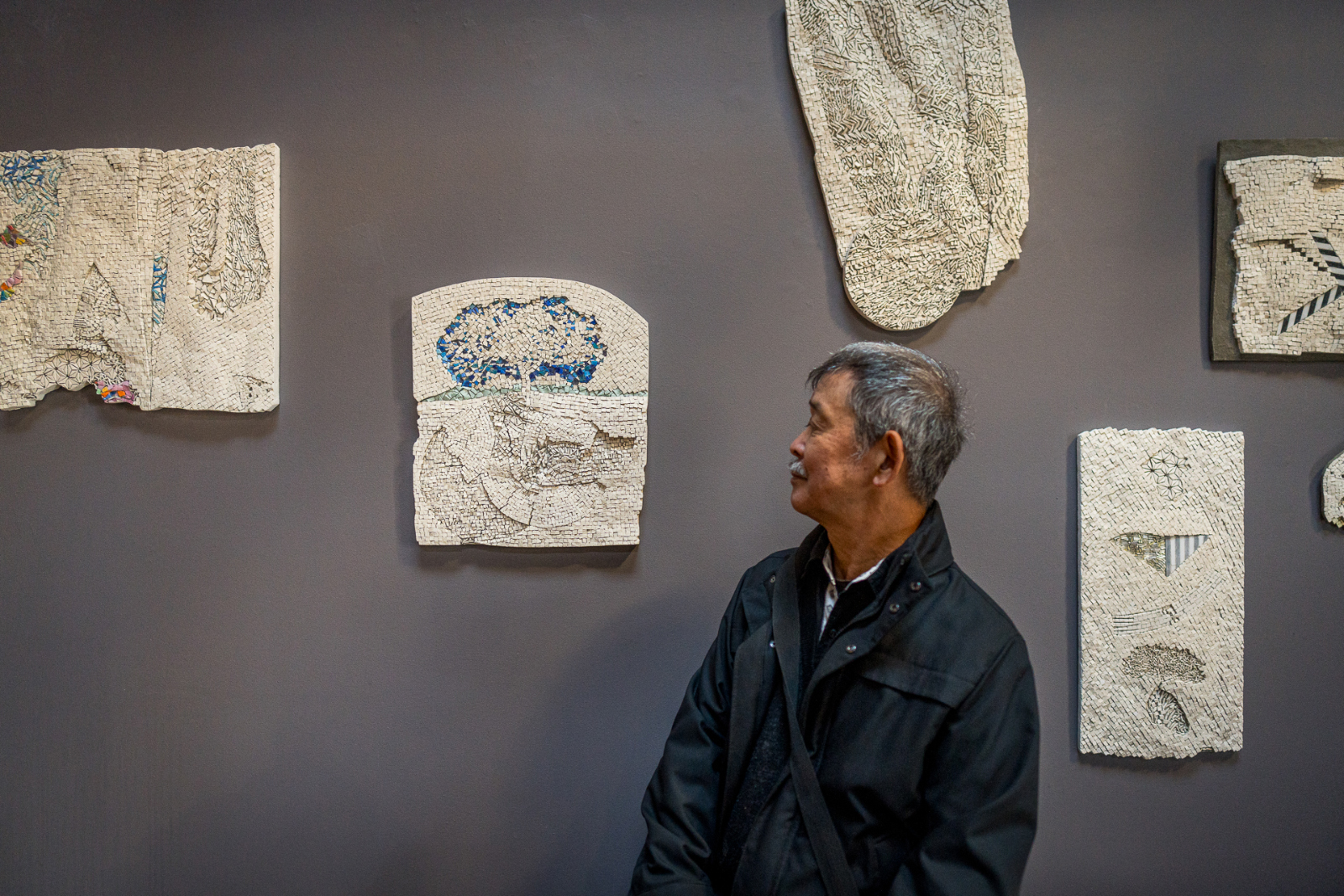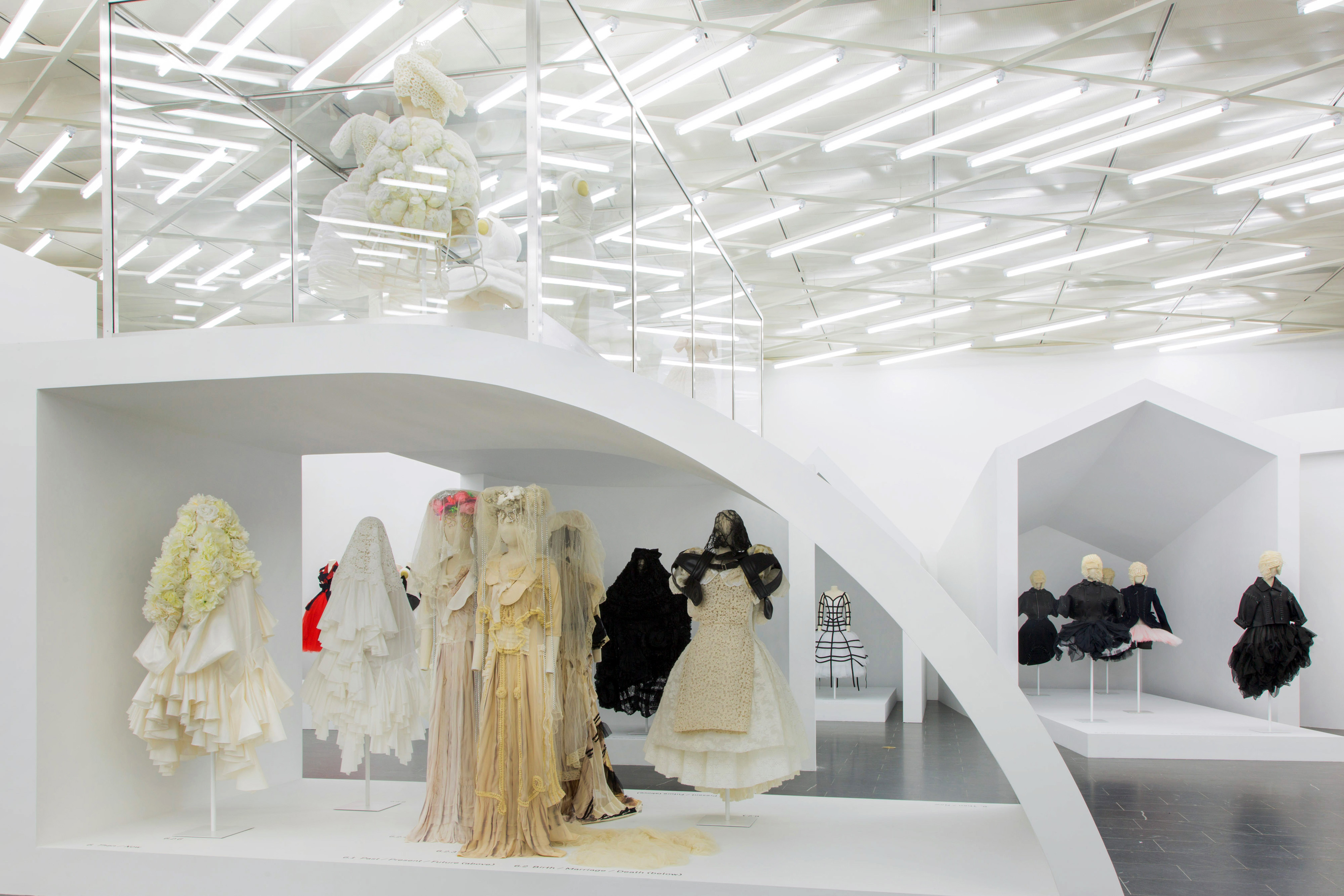
When the Metropolitan Museum of Art’s Costume Institute announced its 2017 Rei Kawakubo exhibition, the fashion world responded with resounding joy. The Japanese designer and founder of Commes des Garçons is revered for her unapologetic, high-concept garments. An avant-garde force, she’s refused to be tethered to the dictates of “femininity” in women’s clothing.
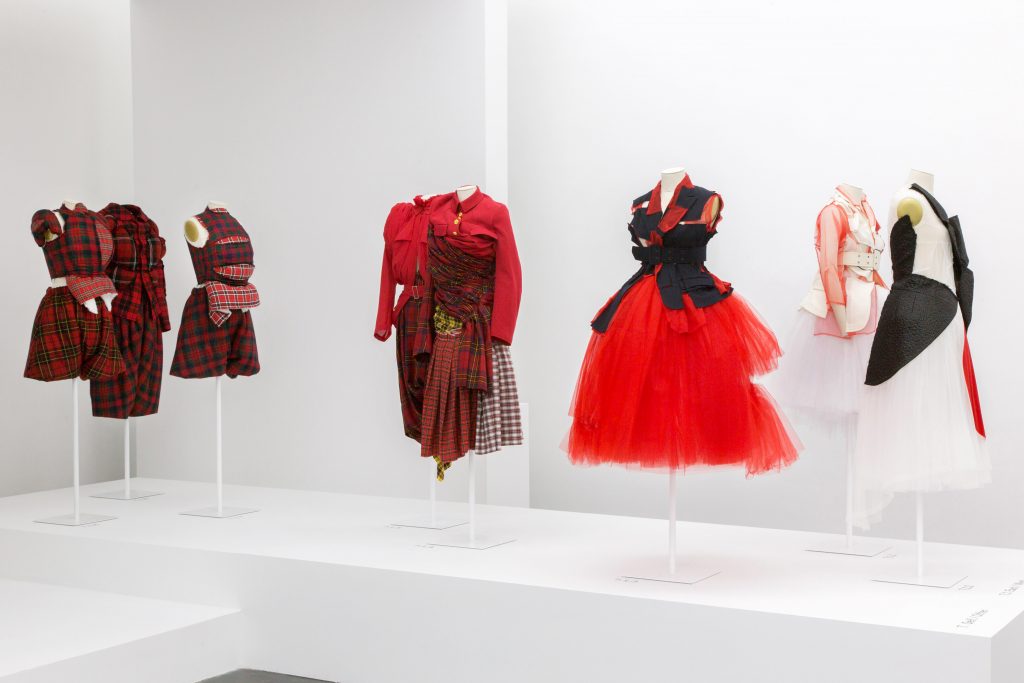
Gallery View, Self/Other East/West. Photo: The Metropolitan Museum of Art
“I have always pursued a new way of thinking about design… by denying established values, conventions, and what is generally accepted as the norm,” says Kawakubo. “And the modes of expression that have always been most important to me are fusion… imbalance… unfinished… elimination… and absence of intent.”
Left: Blue Witch, Spring 2016 by Rei Kawakubo for Comme des Garçons. Photo: Paolo Roversi; Right: Shui Porcelain Vase by Xie Dong
Kawakubo is the first living designer to have a solo exhibition at the Met’s Costume Institute since 1983. Titled Rei Kawakubo/Comme des Garçons: Art of the In-Between, it’s on view through September 4, and presents 140 examples of Kawakubo’s womenswear designs for the brand, dating from the early 1980s to her most recent collection.
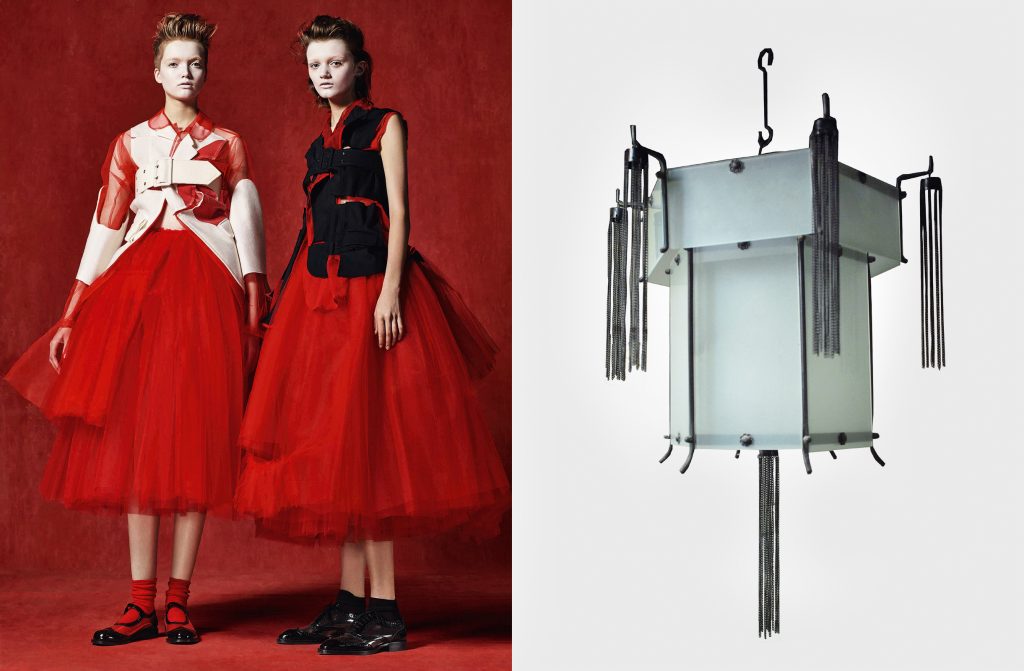
Left: Cubisme, Spring 2007 by Res Kawakubo for Comme des Garçons. Photo: Craig McDean; Right: PAGODA RED Steel Lantern with Tassels
The pieces are organized into nine “dominant and recurring aesthetic expressions of interstitiality in Kawakubo’s work,” according to the Met. Each creation is it own intriguing universe. The entire exhibition is set against white — the stark environment gives spellbinding dimension to Kawakubo’s garments and creates the sense that each collection is a world unto itself.
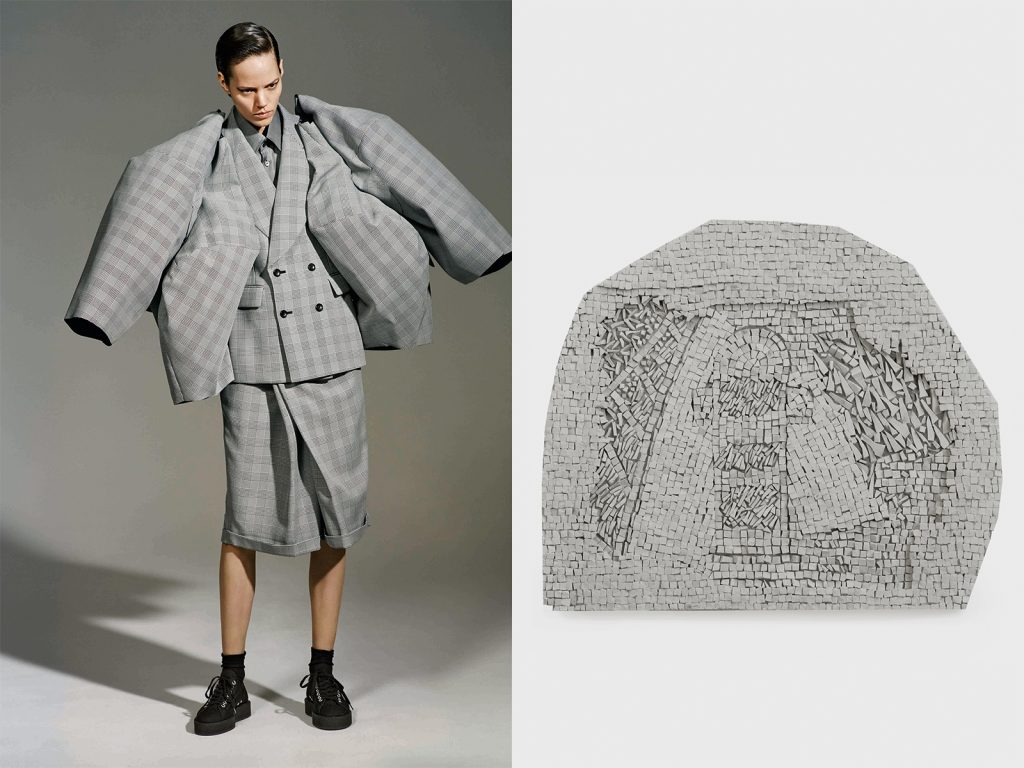
Left: Infinity of Tailoring, Autumn 2013-14 by Rei Kawakubo for Comme des Garçons. Photo: Collier Schorr; Right: A Wheel Stopper mosaic by Toyoharu Kii
They are fascinating, complex, dramatic, sometimes humorous and bold. Andrew Bolton, Curator in Charge of The Costume Institute, reflects on the significance of the work:
“Rei Kawakubo is one of the most important and influential designers of the past 40 years. By inviting us to rethink fashion as a site of constant creation, recreation, and hybridity, she has defined the aesthetics of our time.”
PAGODA RED is fascinated by iconoclasts—both the celebrated names and unknown artists whose work has survived the centuries. Through simultaneously working within and against the prevailing society, Rei Kawakubo exists in a tradition of conceptual, counter-cultural craft.
Left: 18th Century Punk, Autumn 2016 by Rei Kawakubo for Comme des Garçons. Photo: Paolo Roversi; Right: PAGODA RED Altar Cabinet
We look at Kawakubo’s creations in the context of our own collections. We see visual overlap in both ancient Pagoda pieces and modern Pagoda discoveries — the spiral folds of a blood-red dress echo the curves of a glazed cinnabar ceramic stool; cut-and-structured tulle skirts remind us of tasseled lanterns; the weave of a tailored suit evokes a checkered mosaic by Japanese artist Toyoharu Kii.
Left: Blood and Roses, Spring /Summer 2015 by Rei Kawakubo for Comme des Garçons. Photo: Paolo Roversi; Right: PAGODA RED Cinnabar Glazed Garden Stool
Rei Kawakubo uses clothing as a platform for ideas that ascend beyond fashion. The organization of the galleries taps into this concept, with titles like Absence/Presence, Design/Not Design, Fashion/Anti-Fashion, Model/Multiple, Then/Now, High/Low, Self/Other, Object/Subject, and Clothes/Not Clothes. Every gesture reminds us that design depends on the perspective of the viewer — and beauty is always in the eye of the beholder.
